KWANZAA DAY
Wednesday, December 26, 2012–Tuesday, January 1, 2013
Guest Writers for This Unit: Stacey Floyd-Thomas, Lectionary Team Member; Melanie Jones; and Lakisha Lockhart
The unit you are viewing, Kwanzaa, is a compact unit. This means that it is not a complete commentary of the Scripture(s) selected for this day on the calendar, nor does it have a full, supporting cultural resource unit and worship unit. Instead, to enliven the imagination of preachers and teachers, we have provided a sermonic outline, songs, suggested books, and suggested articles, links, and videos. For additional information see Kwanzaa in the archives of the Lectionary for 2008–2011.
I. Description of the Liturgical Moment
Ours is a God who creates; how magnificent are the creations of God. In this vein, this year we lift the principle of creativity (Kuumba). As a principal it encourages that we “Always do as much as we can, in the way that we can, to leave our community more beautiful and benefited than we inherited it.” We encourage readers to contribute to their community through creative means: spoken word, photography, video, music, storytelling, drawing, sewing, quilting, or through any method that creates beauty and benefits our community.
With this material as our backdrop, we provide a sermonic outline for Kwanzaa Day which is also called by some, simply Kwanzaa.
II. Kwanzaa Day: Sermonic Outline
A. Sermonic Focus Text(s): Genesis 1:27 (New Revised Standard Version)
So God created humankind in his image, in the image of God he created them; male and female he created them.
B. Possible Titles
i. People, Peril, Pride, and a Promise!
ii. Love Has Everything to Do with It!
iii. The Providential Power of God’s Promise
C. Point of Exegetical Inquiry
In making God “he” in this passage, there is a possibility of women and others feeling left out and not represented as a part of humanity. In many other versions of this text it states that “God made man in his image.” The NRSV version of the text allows space for all humanity. This includes individuals who may be transgender and are no longer confined to the binary roles in which men and women have been placed but are finding wholeness in who they are and in all of humanity. The focus should be on humanity which gives space to de-gender God as well as individuals who are listening to this sermon. Focus on all humanity which includes persons that might not identify as male or female as stated in the scripture.
III. Introduction
Kwanzaa commemorates African people in all their humanity. This Pan-African and African American holiday celebrates and continues to affirm the human person’s culture, family, community, kinship, and environment with integrity and dignity. This week-long celebration from December 26–January 1 was founded by Dr. Maulana Karenga in 1966–1967. Kwanzaa is rooted in seven main principles known as the Nguzo Saba:
 |
Umoja (Unity)
To strive for and maintain unity in the family, community, nation, and race. |
 |
Kujichagulia (Self-Determination)
To define ourselves, name ourselves, create for ourselves, and speak for ourselves. |
 |
Ujima (Collective Work and Responsibility)
To build and maintain our community together and make our brother’s and sister’s problems our problems and to solve them together. |
 |
Ujamaa (Cooperative Economics)
To build and maintain our own stores, shops, and other businesses and to profit from them together. |
 |
Nia (Purpose)
To make our collective vocation the building and developing of our community in order to restore our people to their traditional greatness. |
 |
Kuumba (Creativity)
To do always as much as we can, in the way we can, in order to leave our community more beautiful and beneficial than we inherited it. |
 |
Imani (Faith)
To believe with all our heart in our spiritual heritage, our people, our parents, our teachers, our leaders, and the righteousness and victory of our struggle. |
This year’s focus is Kuumba, which means Creativity. Kuumba is designed to encourage us to always do as much as we can, in the ways we can, in order to leave our community and all of humanity more beautiful and bountiful than we inherited it.
The imago dei (image of God) is not rooted in just who we are and how we look but it is also what we do. There is an ethical notion that we are responsible and accountable not only to God but to our neighbors, family, community, and humanity as a whole. Kuumba is a principle that focuses on action and creating. As the creator has endowed us with life, we are responsible to in turn use our God-given creative energy to establish and sustain a strong community.
The artistry of God is rooted in God as a divine artist. God displayed masterful artistry in creating us, and if we are made in God’s image then we have the artistry of God within us. This artistry may look different from person to person. One person may have the divine artistry of dance, rap, preaching, skateboarding, spoken word, singing, miming, or acting, and it is our job as people of God to love, accept, and welcome these God-given gifts. For a spiritual community that aims to worship the Creator, our religious spaces ought to be the most creative places on the planet. We ought to make a space for all people with varieties of gifts and talents to be free to express their God-given creativity and to be loved and accepted as part of the community.
IV. Moves/Points
Move/Point One – We are created in the Creator’s image.
a. We relate to God in who we are, in all of our humanity, not based on God’s gender.
b. God is Creator and has created us with divine artistry.
c. De-gendering God opens the door for deep inquiry into God’s image. God’s image is one in which everyone is included and should be able to see themselves.
Move/Point Two – We are created and creative beings.
a. God is the divine artist and within each of us is divine artistry.
b. Realize our fullness as creative beings.
c. What are you creating and breathing life into within your community?
Move/Point Three – Creativity creates community.
a. Making space and allowing opportunity for creativity to be expressed (especially in places of worship) shapes community.
b. Enabling others to freely and openly express their creativity enhances community.
c. It is only in embracing the creativity in others that we can establish and sustain the full humanity in our community.
V. Challenge
God, in an ultimate act of creativity, created us. We were created in God’s image and we too possess this gift of creativity. What beautiful and creative beings we are! The Divine artist has created each of us with a divine artistry to share with the world. In coming together as a creative community, all of humanity is able to be appreciated and to thrive. Our challenge is threefold: (1) to recognize and utilize the creativity within each of us, (2) to appreciate and welcome the creativity within others, and (3) to continue to make space for the diversity in the creativity of all humanity.
VI. Making the Moment Come Alive
Before the sermon have a short dramatic piece about what it means to be made in the image of God. Persons can reflect on Genesis 1:27 and re-enact God and God’s creation. The dramatic act can be in the form of a soliloquy or feature multiple persons and should be prepared in advance. The poem “The Creation” in James Weldon Johnson’s God’s Trombones (1927) could be recited here.
During the sermon have someone paint or draw what they hear and what they feel. This will allow the congregation to visually see how creativity can become a part of liturgy and how painting and drawing are forms of worship.
Re-tell the story of “the blind people and the elephant” which originates from ancient folklore.
The story says:
Six blind people in a village are traveling down a road. They are halted by the sound of people in the road. They hear the travelers’ voices, which seem distant, and ask what they have traveled on. The travelers answer that they are riding on an elephant. Being that the blind people do not know what an elephant is they ask the travelers if they may touch the elephant in order to know it and describe it to the people of their village. The travelers agree and escort each of the six blind people to a different part of the elephant. The first person, who had felt the animal’s side, said, “An elephant is like a great thick wall.” “Nonsense,” said the second person, who had felt the elephant’s tusk; “The elephant is rather short, round, and smooth, but very sharp. I would compare an elephant not with a wall but with a spear!” The third person, who had touched the ear, said, “It is nothing at all like a wall or a spear. It is like a gigantic leaf made of thick wool carpet. It moves when you touch it.” “I disagree,” said the fourth person, who had handled the trunk. “I can tell you that an elephant is like a giant snake.” The fifth person shouted in disapproval. This person touched one of the elephant’s legs and concluded, “An elephant is round and thick like a tree.” The sixth person had been allowed to ride on the elephant’s back and protested, “An elephant is like a gigantic moving mountain!” The travelers explained to the blind people that they were all correct. The travelers told the blind people that the reason every one of them was telling it differently is because each one of them touched a different part of the elephant. So, actually the elephant has all the features that each of the blind persons mentioned.
Creativity enables the community to flourish within its many dimensions. Just as the fullness of the elephant could not be realized until all of the pieces where put together, the same is also true of humanity. There are so many facets of a community that it is not until all the creative pieces come together as a whole that all of humanity can be realized and celebrated. This week’s focus is on Kuumba or Creativity. This principle focuses on always doing as much as we can, in the way we can, in order to leave our community and all of humanity more beautiful and bountiful than we inherited it.
VII. Sounds, Sights, Colors in This Passage
| Sounds: |
Ocean; wind; birds; trees; breath of life;
|
| Sights: |
Creation; breath of life; body; flesh; blood; man and woman; dirt; earth and ground;
mirror images; and
|
| Colors: |
Light; dark; various hues; brown dirt; green ground; blue sky. |
VIII. Songs to Accompany This Sermon
A. Well-known Song(s)
- Imani. By Phillip Manuel and Bill Summers
- Kwanzaa. By Billy Childs and The Headhunters
- Happy Kwanzaa. By Reggie Calloway
B. Modern Song(s) (Written between 2000–2011)
- The Unity Song. Traditional
- Peace. By Kevin David
- All Good Things Work for the Good. Traditional
- How Great Is Our God. By Jesse Reeves and Chris Tomlin
C. Spiritual(s) and Hymn(s)
- Lord Make Me More Holy. Arr. by Roland M. Carter
- Who Is My Mother, Who Is My Brother? By Shirley Erena Murray. Music by Jack Schrader
- Blest Be the Tie that Binds. By John Fawcett. Tune by John G. Nageli. Arr. by Lowell Mason
- There’s No Me, There’s No You. By Evelyn Reynolds. Arr. by Nolan Williams, Jr.
- Lift Every Voice and Sing. By James W. Johnson. Tune by J. Rosamund Johnson
- How Great Thou Art. By Stuart K. Hine
D. Liturgical Dance Music
- Light the Kinara for Kwanzaa. By Sally K. Albrecht
- Kumbaya. Traditional
E. Song(s) for the Period of Prayer
- Walk by Faith. By Fred Hammond and David Ivey
- The Lord’s Prayer. By Albert Hay Malotte
F. Sermonic Selection(s)
- Kwanzaa/Umoja/Uhuro. By Gary Hines
- Seven Principles. By Bernice Johnson Reagon
G. Invitational Song(s)
- Have Thine Own Way, Lord. By Adelaide A. Pollard. Tune by George C. Stebbins
- I Need You to Survive. By David Frazier
- I Give Myself Away. By William D. McDowell
- I’m Available to You. By Carlis Moody, Jr.
H. Benediction Song or Instrumental
- I Need a Blessing. By LaNardo Butler
- Cast Your Cares. By Twinkie Clark-Terrell
IX. Videos, Audio, and/or Interactive Media
X. Books to Assist in Preparing Sermons, Bible Studies, and/or Worship Services Related to Kwanzaa
Pleck, Elizabeth. “Kwanzaa: The Making of a Black Nationalist Tradition, 1966–1990.” Journal of American Ethnic History. Vol. 20, No. 4, Summer, 2001.
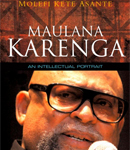 |
Asante, Molefi Kete. Maulana Karenga: An Intellectual Portrait. Stafford BC, Queensland: Polity, 2009. |
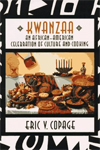 |
Copage, Eric V. Kwanzaa: An African Celebration of Culture and Cooking. New York, NY: Harper Perennial, 1993. |
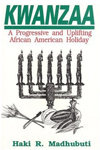 |
Madhubuti, Haki R. Kwanzaa: A Progressive and Uplifting African American Holiday. Chicago, IL: Third World Press, 1972. |
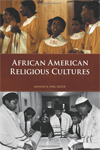 |
Pinn, Anthony and Stephen Finely. African American Religious Cultures (2 Vol. Set). Santa Barbara, CA: ABC-CLIO, 2009. |
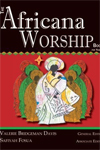 |
Fousa, Safiyah and Valerie Bridgeman Davis. The Africana Worship Book (Volume 2 Year B). Nashville, TN: Discipleship Resources (GBOD), 2008. |
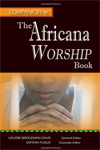 |
Fousa, Safiyah and Valerie Bridgeman Davis. Companion to the Africana Worship Book. Nashville, TN: Discipleship Resources (GBOD), 2008. |
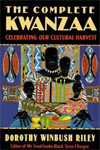 |
Riley, Dorothy Winbush. The Complete Kwanzaa: Celebrating Our Cultural Harvest. New York, NY: HarperCollins, 1995. |
XI. Links to Helpful Websites for a Celebration of Kwanzaa Day
XII. Notes for Select Songs
A. Well-known Song(s)
- Imani. By Phillip Manuel and Bill Summers
Location:
Summers, Bill. The Essence of Kwanzaa. New Orleans, LA: Monkey Hill Records, 1997.
- Kwanzaa. By Billy Childs and The Headhunters
Location:
The Headhunters. Return of the Headhunters. New York, NY: Universal, 1998.
- Happy Kwanzaa. By Reggie Calloway
Location:
Pendergrass, Teddy. This Christmas I’d Rather Have Love. New York, NY: Wind Up Records, 1998.
B. Modern Song(s) (Written between 2000–2011)
- The Unity Song. Traditional
Location:
United for a Purpose. Unity Christian Fellowship International Presents…United for a Purpose: Sacrifice of Praise. Fredericksburg, VA: Unity Christian Fellowship, 2009.
- Peace. By Kevin David
Location:
Peace. Shibuyaku, Tokyo: Imperial Records Japan, 2007.
- All Good Things Work for the Good. Traditional
Location:
Franklin, C.L. All Good Things Work Together for the Good/What Must I Do to Be Saved. Atlanta, GA: AIR Gospel, 2008.
- How Great Is Our God. By Jesse Reeves and Chris Tomlin
Location:
Nelson, Jonathan & Purpose. Right Now Praise. New York, NY: Integrity, 2008.
C. Spiritual(s) and Hymn(s)
- Lord Make Me More Holy. Arr. by Roland M. Carter
Location:
African American Heritage Hymnal. Chicago, IL: GIA Publications, 2001. #632
- Who Is My Mother, Who Is My Brother? By Shirley Erena Murray. Music by Jack Schrader
Location:
Zion Still Sings for Every Generation. Nashville, TN: Abingdon Press, 2007. #91
- Blest Be the Tie That Binds. By John Fawcett. Tune by John G. Nageli. Arr. by Lowell Mason
Location:
African American Heritage Hymnal. #341
- There’s No Me, There’s No You. By Evelyn Reynolds. Arr. by Nolan Williams, Jr.
Location:
Zion Still Sings. #92
- Lift Every Voice and Sing. By James W. Johnson. Tune by J. Rosamund Johnson
Location:
African American Heritage Hymnal. #540
- How Great Thou Art. By Stuart K. Hine
Location:
African American Heritage Hymnal. #148
D. Liturgical Dance Music
- Light the Kinara for Kwanzaa. By Sally K. Albrecht
Location:
December Nights, December Lights. Van Nuys, CA: Alfred, 2007.
- Kumbaya. Traditional
Location:
Carr, Kurt & The Kurt Carr Singers. Gospo Classics, Vol. 1. Inglewood, CA:
Gospocentric, 2005.
E. Song(s) for the Period of Prayer
- Walk by Faith. By Fred Hammond and David Ivey
Location:
Williams, Vanessa. Vanessa. Nashville, TN: Compendia, 2002.
- The Lord’s Prayer. By Albert Hay Malotte
Location:
Jackson, Mahalia. Live at Newport 1958. New York, NY: Columbia, 1958.
F. Sermonic Selection(s)
- Kwanzaa/Umoja/Uhuro. By Gary Hines
Location:
Sounds of Blackness. Time for Healing. New York, NY: Perspective, 1997.
- Seven Principles. By Bernice Johnson Reagon
Location:
Women of the Calabash. The Kwanzaa Album. New York, NY: Orchard, 1998.
G. Invitational Song(s)
- Have Thine Own Way, Lord. By Adelaide A. Pollard. Tune by George C. Stebbins
Location:
African American Heritage Hymnal. #449
- I Need You to Survive. By David Frazier
Location:
Walker, Hezekiah. The Essential Hezekiah Walker. New York, NY: Verity, 2007.
- I Give Myself Away. By William McDowell
Location:
As We Worship Live. New York, NY: Koch, 2009.
- I’m Available to You. By Carlis Moody, Jr.
Location:
Brunson, Milton. Available to You. New York, NY: Word, 1988.
H. Benediction Song(s) or Instrumental
- I Need a Blessing. By LaNardo Butler
Location:
Johnson, Keith and The Spiritual Voices. Unity. Houston, TX: Worldwide Gospel, 2005.
- Cast Your Cares. By Twinkie Clark-Terrell
Location:
Lawrence, Donald & The Tri-City Singers. Bible Stories. Detroit, MI: Crystal Rose Records, 1995.
|

